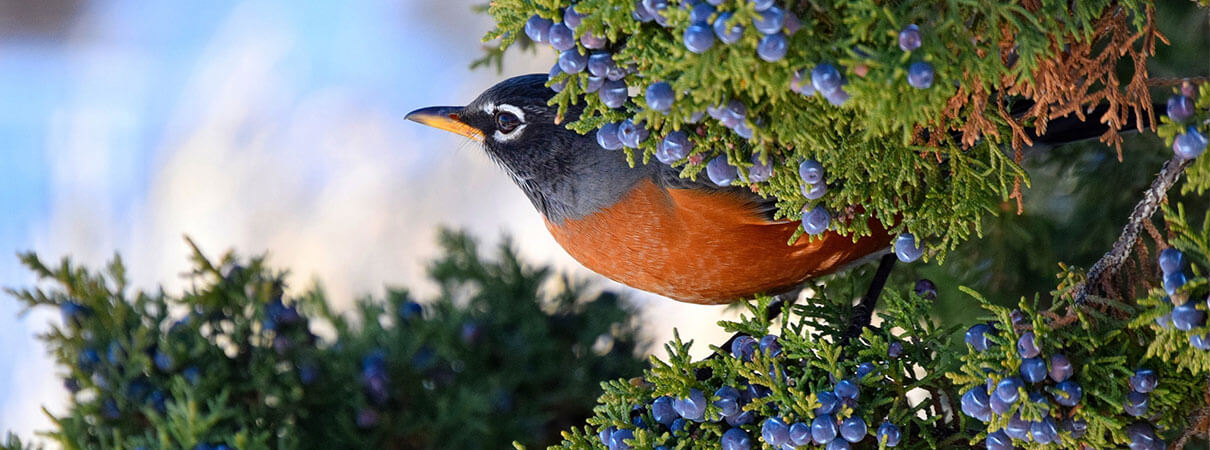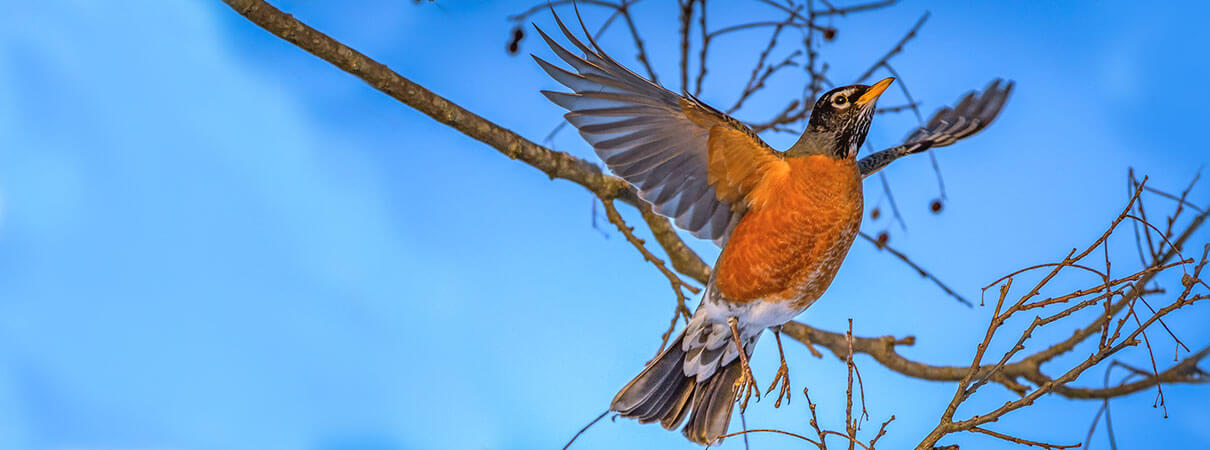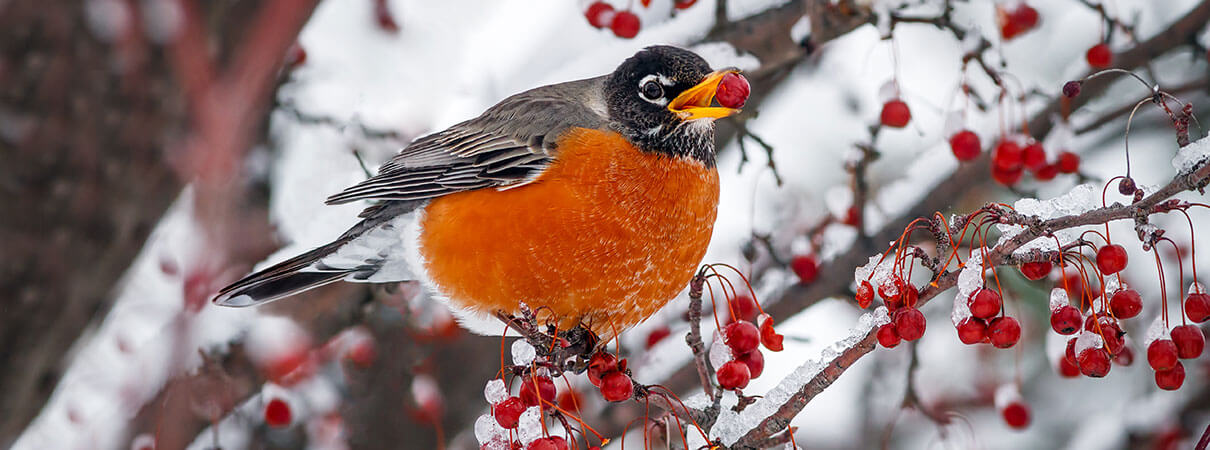What Does It Mean When You See Robins and Blue Birds in Early January in Texas
Springtime singer or snowy sentinel? The American Robin may be one of North America's most familiar songbirds, yet its wintering patterns raise a common question: Do robins migrate?
The answer is yes and no. We associate robins with spring for good reason: In many places, they arrive with the warm weather. But that doesn't mean all of these birds escape winter's bite.
Winter Strategies
Unlike long-distance migrants and many hummingbirds, which head south en masse during the fall, robins react to winter's onset in two ways.
Many retreat southward. Northern Canada empties of robins, while areas far to the south like Texas and Florida receive large winter flocks. But those making the journey are not lured by warmer temperatures: Robins can withstand extremely cold temperatures, adding warm, downy feathers to their plumage. The real motivation is food, or rather the lack of it. As their warm-weather diet of earthworms and insects wanes, robins begin searching for fresh supplies.

American Robin. Photo by Torin Sammeth/Shutterstock
But declining invertebrate numbers aren't a problem for all robins — and a good number stay up north, which is the second way robins react to winter. They have been observed in every U.S. state (except Hawai'i) and all southern Canadian provinces in January. They're able to remain thanks to several important adaptations.
First, they change their diet, transitioning from protein-rich invertebrates to vitamin-rich winter fruits and berries, including junipers, hollies, crabapples, and hawthorns.
They also begin moving. In the spring and summer, robins aggressively defend their territories and raise young. In the winter, they become nomadic, searching widely for their favorite cold-weather fare. Weather also influences robin movements. A heavy snowfall that persists for more than a few days may send them on their way, searching for better conditions.

American Robin. Photo by Jeff Rzepka/Shutterstock
Robins also form flocks in the winter. These flocks, which can number in the hundreds or thousands, stand in contrast to the birds' territorial pairings in spring and summer. Flocking offers critical benefits: Larger groups mean more eyes and improved chances to spot — and avoid —predators. They also increase the odds of discovering food.
Finally — and this is generally true throughout their range — robins make little noise during winter months. Although some males begin singing toward winter's end as spring approaches and mating hormones kick in, they typically maintain a subdued presence.
Taken together, these changes dramatically lower robins' profile in the northern part of their range, making sightings much less common, and leading some people to assume they are absent.

American Robin. Photo by Kenneth Keifer/Shutterstock
To Stay or To Go
So how do Robins decide whether to stay or go during the winter?
There is not yet a good answer, but gender may play a role, as males are more likely to remain than females in northern areas. This offers an obvious territorial advantage, allowing males early access to the best breeding grounds.
When spring arrives, northern flocks of robins disperse and resume their invertebrate diet, picking earthworms and other invertebrates from the ground. Around the same time, migrating robins return from the South, with males arriving a few days to two weeks before females. In both cases, males sing vigorously as they begin defending territory. The result? Robins seem to be everywhere once again.

American Robin. Photo by Michael Stubblefield
Robin Conservation
Unlike many other birds, the American Robin seems to have benefited from urbanization and agricultural development. Although its populations are increasing, it remains vulnerable to many of the same factors threatening less adaptable species.
Pesticide poisoning remains an important threat, since American Robins forage on lawns and other open spaces that are often sprayed with toxins. Although DDT has been banned in the United States, other toxic chemicals such as neonicotinoids, chlorpyrifos, and glyphosate (used in the familiar weed-killer Roundup) are still in use. Pesticides can also affect populations of earthworms, a major food source for this bird.
Since American Robins often forage and feed on the ground, they are especially vulnerable to predation by outdoor cats. Collisions with windows, communications towers, and car strikes are other common hazards.
Many of ABC's policy programs help to reduce the impacts of these hazards. Our Cats Indoors and Bird-Smart Glass programs in particular offer solutions for making backyards safer. We also offer tips on improving your backyard habitat to make it more welcoming year-round to the American Robin and other birds.
Source: https://abcbirds.org/blog20/do-robins-migrate/
0 Response to "What Does It Mean When You See Robins and Blue Birds in Early January in Texas"
Post a Comment